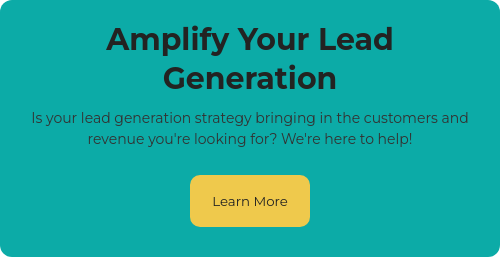You’re having your ideal Friday night with some good food and a glass of wine — or whiskey if you prefer. And as Alexa casts YouTube on your 50-inch TV, you wonder how all of the recommended videos are to your liking. When you play one of those recommendations, it begins with an ad highly personalized to you, as if YouTube is reading your mind.
No, you haven’t had a few glasses more than you should have; this is dynamic content that’s showing based on your preferences and data. You could also call it “personalization in motion.” Highly personalized emails and social media messages also fall into this category.
What Is Dynamic Content?
Any form of content — text, audio, or video — that changes on the basis of users’ preferences, demographics, previous search history, or past engagement with a brand is dynamic content. Brands create dynamic content to offer a better user experience, high personalization, and short sales cycles. It’s no wonder why marketers have started this side of content that enables them to have impactful touch-points throughout the customer journey as part of inbound marketing.
It all sounds great, but why should you care? We’ll talk about some hard facts in terms of how dynamic content and personalization can work wonders for any campaign, so you can decide for yourself if it’s right for you.
80 Percent Consumers Expect Brands to Offer Personalized Recommendations
Research conducted by Epsilon revealed that 80 percent of consumers are more likely to make a purchase when brands offer personalized experiences. And 90 percent indicated that they find personalization appealing. When offerings are relevant and intuitive, it automatically increases the ROI of that offering. However, this can only work if the customer data is well structured. To achieve this, your dynamic content needs to be well connected to the CRM you might be using so that everything you collect is centralized.
66 Percent Won’t Make a Purchase If the Content Is Not Personalized
Blame Netflix and Amazon for setting the personalization bar really high, so that a lot of brands fall behind. According to research done by the CMO of Adobe, 66 percent of consumers say that encountering content that isn’t personalized would stop them from making a purchase.
Loni Stark, senior director of strategy and product marketing at Adobe, further explains it: “The challenge today for brands is that there’s so much more content being created, and so it has become very competitive in terms of getting people’s attention. It’s becoming harder and harder to stand out. That’s why many brands are setting the bar higher by engaging with customers on a personal level with content and messaging that is personalized, relevant, and more likely to garner engagement.”
98 Percent of Marketers Are Here for It
A study conducted by KoMarketing said that 98 percent of marketers agree that personalization advances their customer relationships, and 78 percent said that it had a “strong” and “extreme” impact on how successful their customer relationships were going to be in the future. Salesforce’s Interaction Studio is a great example of how dynamic content is an effective way of customer retention.
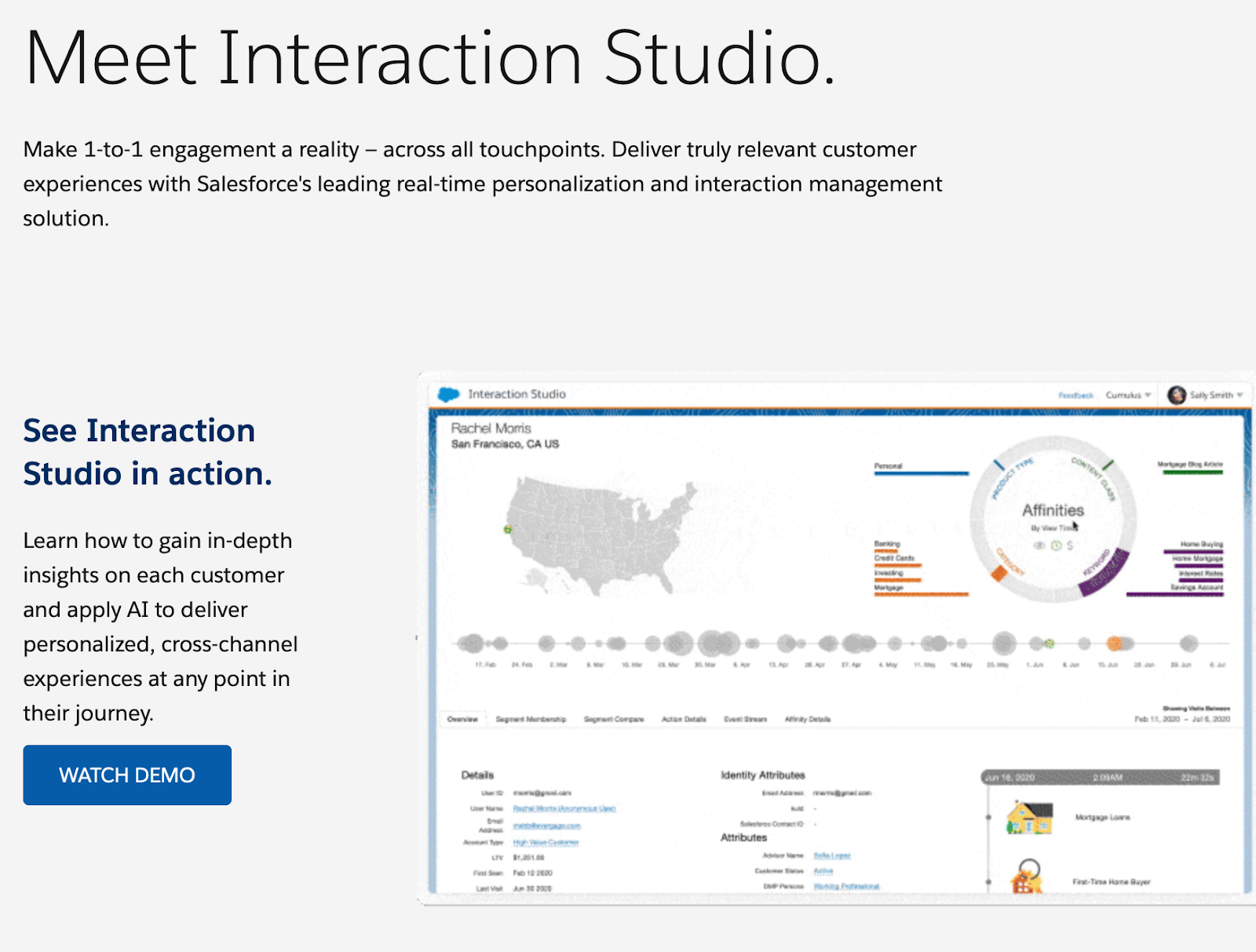
Source: Salesforce
80 Percent of Marketers Find That Dynamic Content Provides 18X Value
When it comes to email marketing, 80 percent of marketers agree that dynamic content is very important and that relevant emails having dynamic tags are capable of driving as much as 18 times more revenue than broadcast emails. Since the content is dynamic, some of the tactics, such as a free trial offer, limited-time trial offer, or live demo offer, etc., are driving lead generation much better than traditional email blasts. It is no wonder that emails that include the first name of the recipient in their subject line also get higher click-through rates than emails that do not.
79 Percent That Exceeded Revenue Goals Had a Personalization Strategy
Implementing personalization in your marketing strategy is a goal worth pursuing and marketers are already backing this with their own experiences in terms of content lead generation. Research by Monetate suggests that 79 percent of organizations that exceeded revenue goals have a documented personalization strategy.
As per another study by Gartner, smart personalization engines used to recognize customer intent will enable digital businesses to increase their profits by up to 15 percent. While there might be no perfect recipe for personalization, the ingredients remain the same. The one-size-fits-all marketing concept has long been buried under the newfound needs of customers and prospects to feel valued.
3 Ways for Achieving Effective Dynamic Content Strategy
1. Personalized Recommendations and Free Trials
It’s a common myth that personalization is limited to only ecommerce and retail businesses. In fact, a lot of B2B brands use personalized recommendations as a way of upselling and cross-selling their products and services. As a rule of thumb, if your brand sells a few different products and services, you could easily implement a recommendation system. Account-based marketing is one of the ways to market to specific prospects and offer highly personalized content that is of value.
For a B2B SaaS business Brainshark, personalized, in-trial messages increased their online registrations by 15 percent. Identifying the bottlenecks early on, such as free products not being used by people even after signing up, they incorporated relevant messages inside their user interface to help users with tips to optimize the platform to the best of their advantage. Following this, they went on to incorporate relevant CTAs, guides, webinars, etc., for further engagement.
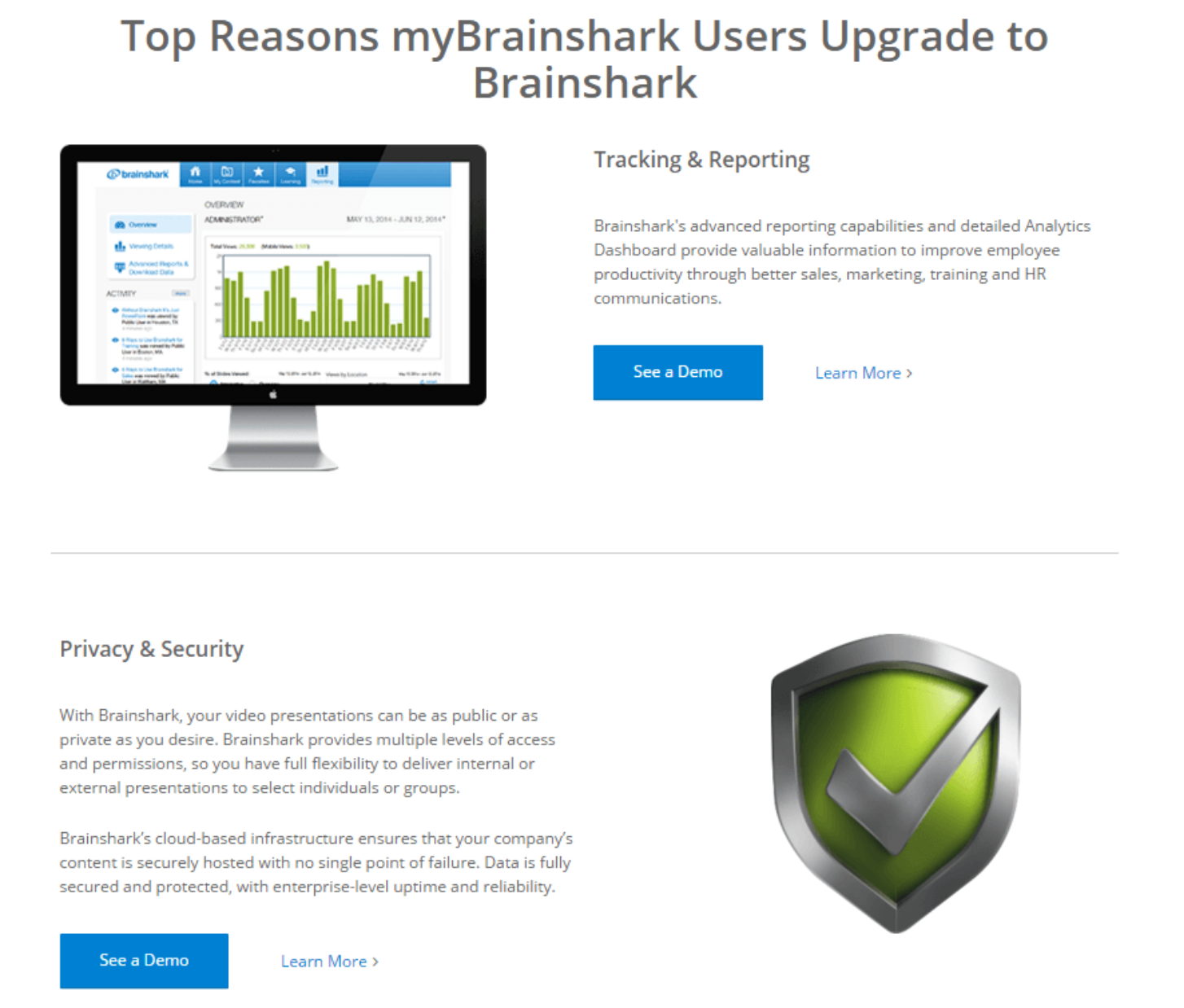
The result? Registrations went up by 15 percent, free-trial signups increased by 150 percent, and the sales pipeline grew by over $1.1 million.
Here are some other offerings that could be highly personalized:
- Custom Integrations: Custom integrated third-party solutions are the need of almost every enterprise B2B business that might be heavily invested in technology.
- Optimizing Site Search: SEO isn’t only limited to fixing the technical issues but also contributes heavily to user experience. Dynamic content can amplify the site content and can prove to be highly effective.
- Dynamic Search Box: Instead of directing users to your product with each search on the website, the search box can be made very dynamic by helping them narrow down their options with content.
2. Dynamic Call-to-Actions
CRM systems such as HubSpot come with in-built dynamic CTA functionality that your brand can leverage from the first touch-point all the way across the funnel. For example, if a user has already taken the free-trial offer, then it’s necessary to offer them the next asset that will help them go deeper into the engagement channel.
A similar thing can be achieved for what different buyer personas you’re targeting see and take action on. It’s a bit of hard work but if implemented correctly, it could yield significant results, especially in terms of leads. This great example from HubSpot shows how after a user downloads their ebook/guide on using CTAs, they're prompted to take another action on this page.
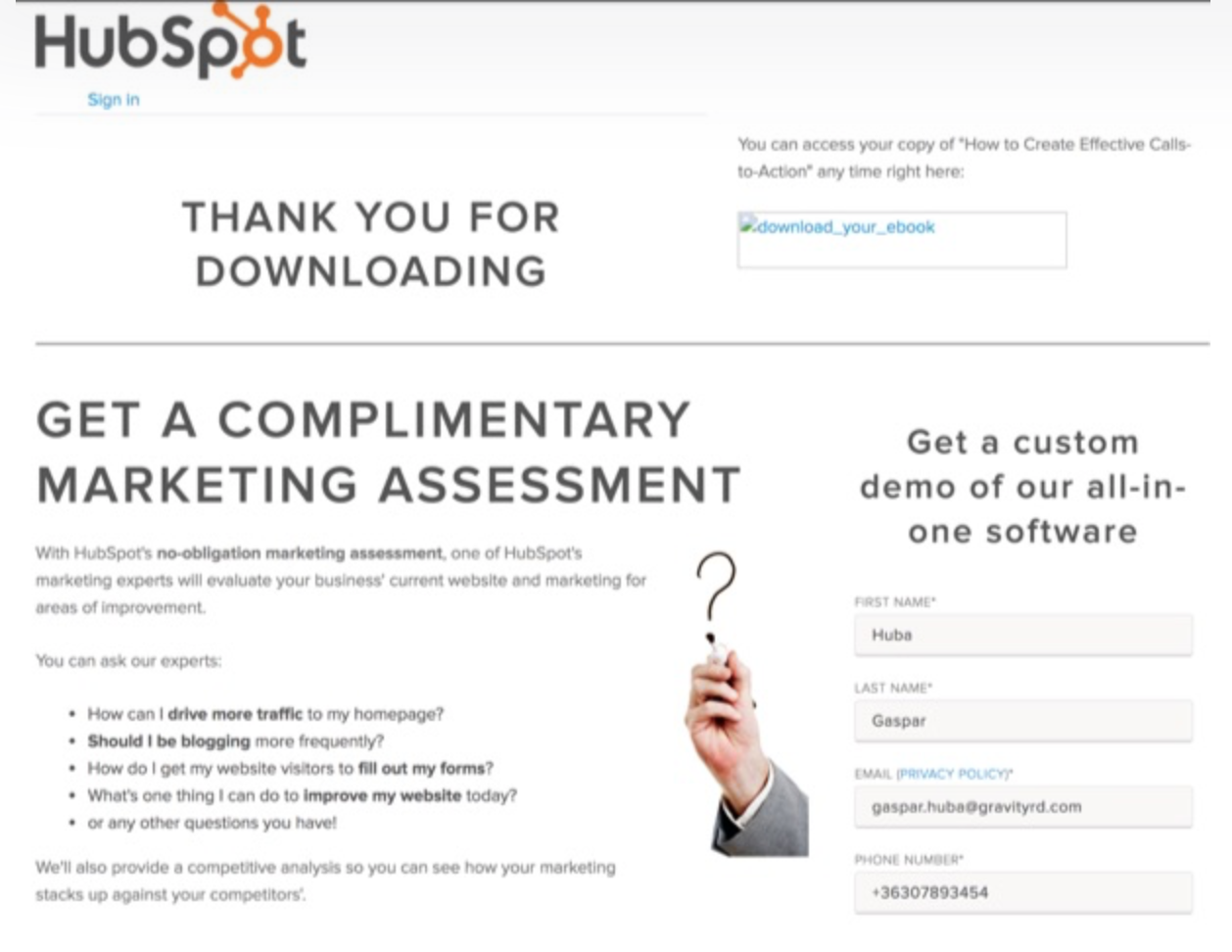
Source: HubSpot
The thing to note here is that the information you gave in the previous step is already pre-populated on the form and all you need to do is click submit. This is how a dynamic CTA plays into action.
3. Dynamic Native Content
Native content is a great example of how dynamic content can play a big role in promoting your brand on other platforms. By adding relevant, contextual, and high-performing content on different platforms, it expands the reach of your brand. The goal here is to make the user experience the least disruptive and that’s why the look and feel of your content needs to match that of the platform.
The rule of thumb is to create content that’s relevant to the customer journey and different stages of the funnel depending on who you want to attract and to which product or service.
IBM’s native ad on The Atlantic is a significant example of how native content plays out. IBM chose a multi-part native advertising series where it tells a captivating story about how IBM helps businesses create beautiful customer experiences. Since one of the articles talks about the intelligent use of data analytics in sports and nutrition, it makes sense why IBM would partner with The Atlantic, making it appear a part of the platform by matching its tone, look, and feel. This also goes to say how data-driven content can be easily consumable, no matter the platform.
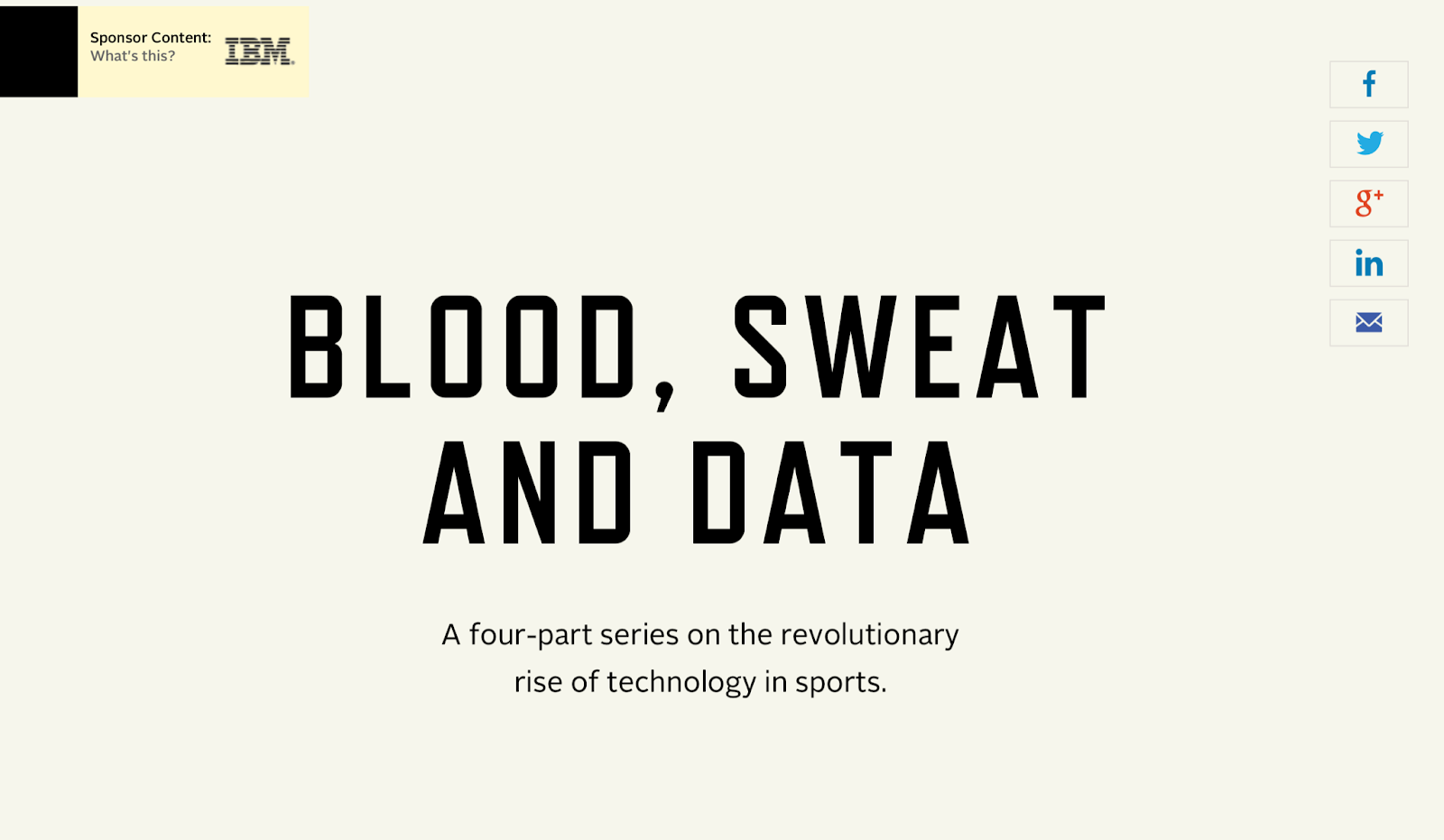
How Do You Measure the Success of Dynamic Content?
-1.png?width=832&name=pasted%20image%200%20(2)-1.png)
Source: Neil Patel
To justify the investment in dynamic content, you need to know how to track the results and what to track. First up is content consumption — shares, downloads, and views. You're not just collecting emails but really building a relationship with these prospects by slowly developing a persona based on who they are and what their online behavior is like. Second is engagement — comments, conversion rates, and session duration. Is the content starting a conversation? Is it giving you the opportunity to "profile" your prospects better like you did in the first step? Is it converting? And lastly, ROI — leads and sales opportunities. Is the content prompting the visitors to take the desired action on the CTA you've placed strategically? Once you know exactly what to track and how, you'll get into a groove and these things will run on auto-pilot.
Ready to get started? If you’re struggling with how to implement a dynamic content strategy in your organization, don't worry. Our lead gen experts are here to help.


